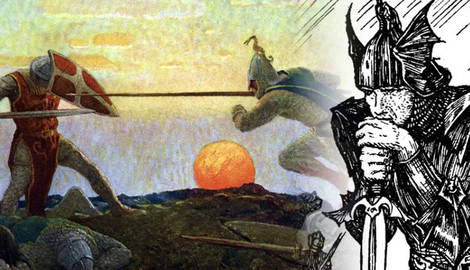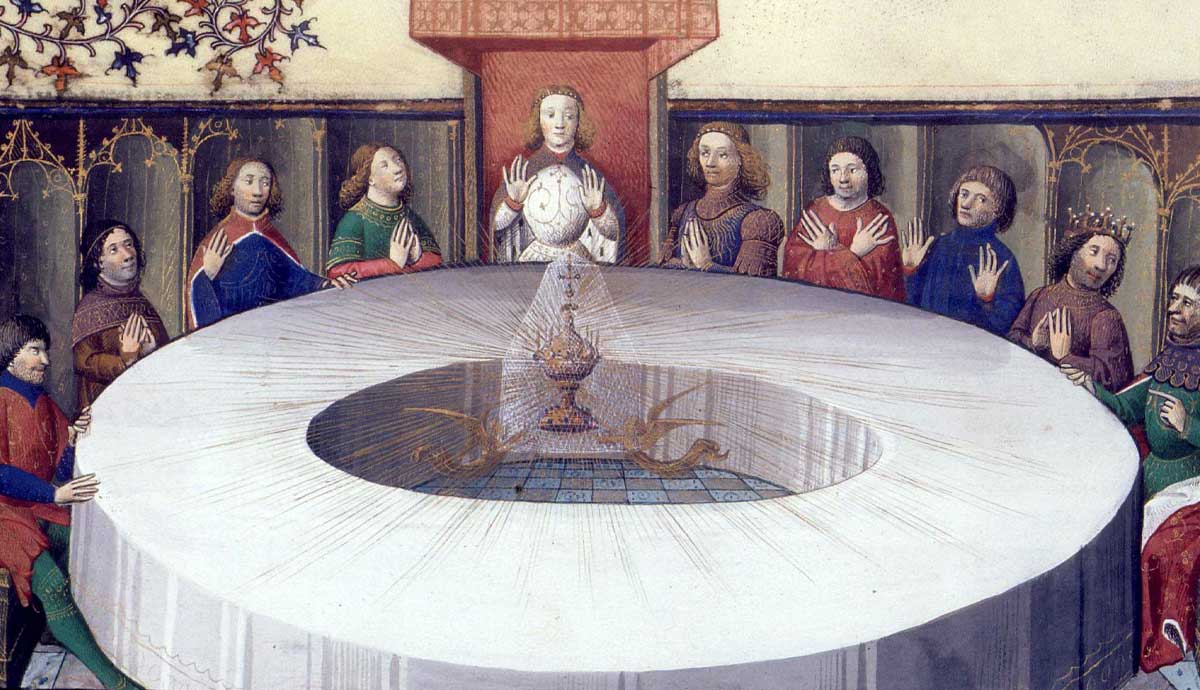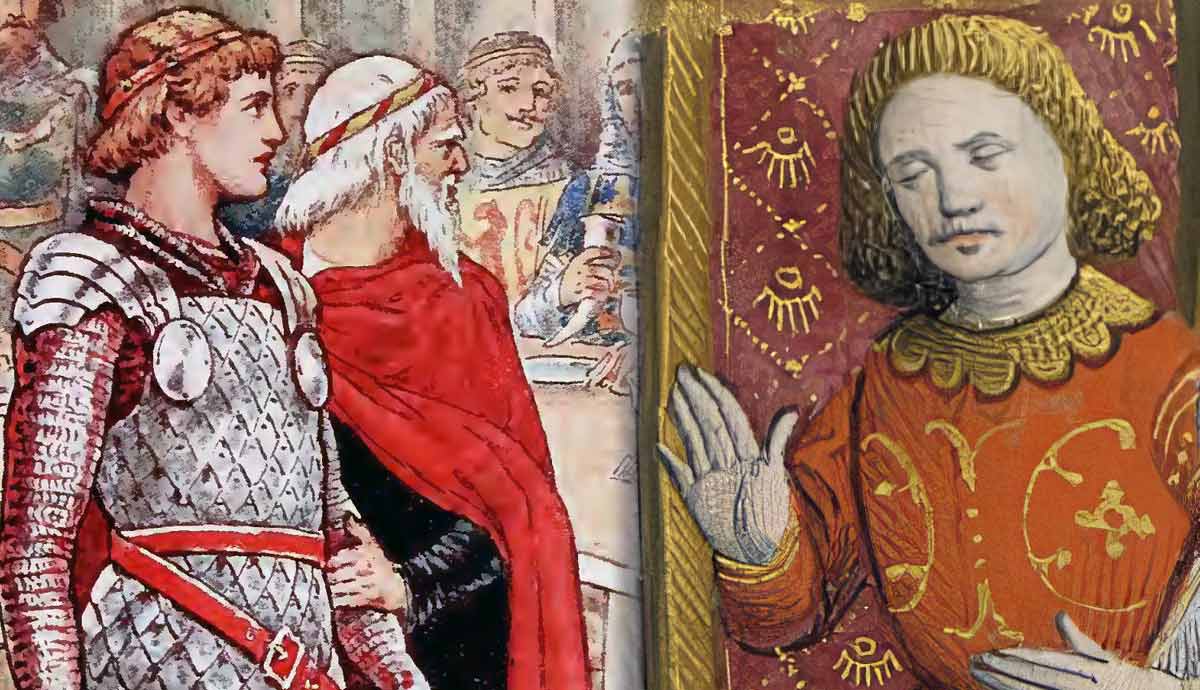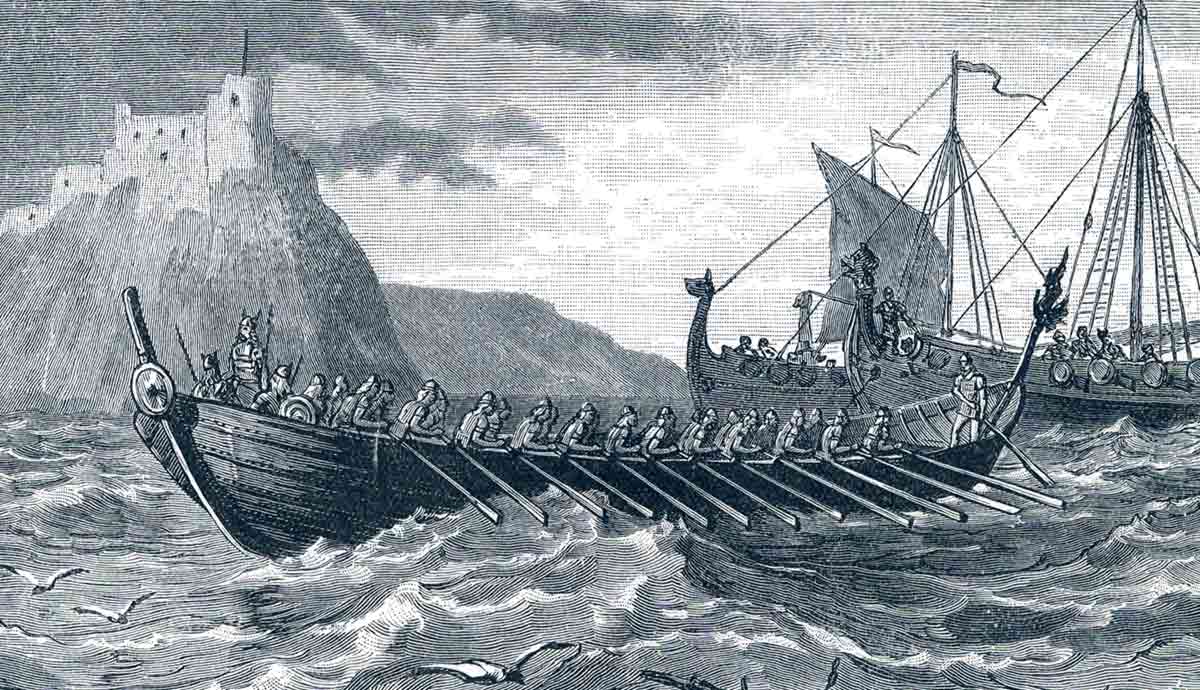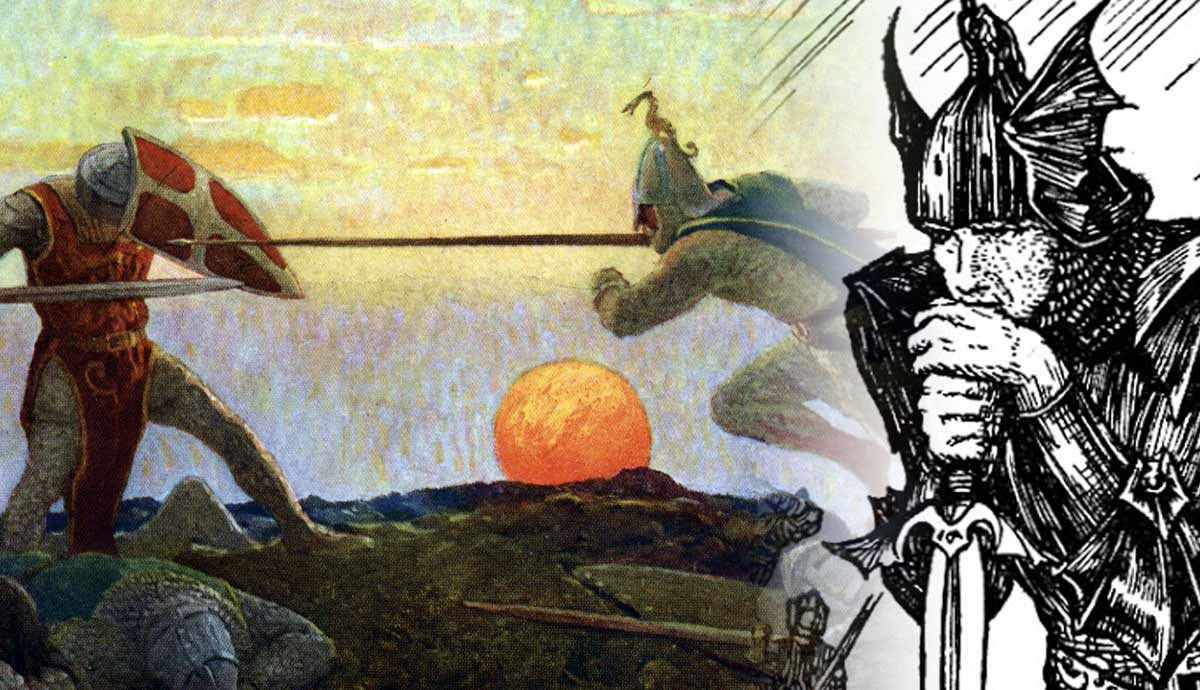
In the Arthurian legends, King Arthur famously fought 12 battles against the Anglo-Saxons, culminating in the historically important Battle of Badon. Years later, he fought against his nephew, Mordred, at the tragic Battle of Camlann. However, there are some obscure references to another one of King Arthur’s battles which has mostly been forgotten today. This battle is particularly notable because it actually appears in one of the very earliest sources that mentions Arthur. The conflict in question was the Battle of Llongborth, and like Camlann, this was remembered as a tragedy. What do we know about it?
The Source for King Arthur’s Battle of Llongborth

The earliest reference to the Battle of Llongborth comes from a Welsh poem usually known as Geraint son of Erbin. In actuality, the medieval sources give it two different titles. One is Gereint fil’ Erbin, while the other is Englynion Gereint fab Erbin. The two titles are given to two somewhat different versions of the same poem. The former is the title found in a manuscript called the Black Book of Carmarthen, while the latter is the title found in the White Book of Rhydderch and the Red Book of Hergest. Despite the comparatively late date of these manuscripts, the original poem is believed to date back to approximately the year 900.
The poem tells of a battle that occurred at a place called Llongborth. The principal focus of the poem is a king named Geraint son of Erbin, but King Arthur is presented as being present as the leader of the conflict. Not many details are given, but the general tone is that of a tragedy, with many said to have been slain at the battle.
Did Geraint Die at the Battle of Llongborth?

Geraint, the subject of this poem, was the king of Dumnonia (essentially Devon and Cornwall) in the 6th century and appears in other medieval sources. The traditional interpretation of this poem is that it tells of the death of this king. One of the stanzas in the poem reads as follows:
“In Llongborth Geraint was slain,
A brave warrior from the region of Dyfnaint,
They were killing although they were killing them.”
Due to this stanza, the poem has essentially always been viewed as an elegy, or grave song, in honor of Geraint. However, this interpretation has come under fire in recent years. Some scholars have noted that the stanza in question speaks in the plural in the final line. To such scholars, this suggests that the stanza is actually talking about the death of Geraint’s men and not Geraint himself. This is seemingly supported by the reading in the Black Book of Carmarthen’s version, where the second line explicitly refers to “warriors,” plural. Furthermore, the Welsh text in the first line in that version is apparently corrupt and could be easily corrected to read “was slain to Geraint” rather than “Geraint was slain.”

However, there is good reason to reject this newly suggested interpretation. For one thing, the switch between singular and plural is not really significant. We see this same phenomenon in the adjacent stanza, which refers to Arthur. The reference to Arthur is definitely to a single person, and it describes him as the conductor of the toil. Yet, the middle line randomly switches to the plural to mention his warriors, with no natural transition, just like in the stanza about Geraint. Therefore, the use of the plural in the final line of Geraint’s stanza, or even in both the second and third lines, is not significant. It does not mean that the first line is actually about them rather than Geraint.
What about the proposed correction of the first line, based on the reading in the Black Book of Carmarthen? The Welsh text in that line is awkward and evidently slightly corrupt. However, the proposed correction (the removal of a single letter) could just as easily be applied to bring the reading in line with the text of the version in the White Book and the Red Book.
Significantly, scholars have noted that the White/Red version of the poem generally seems to preserve something closer to the original than the Black version.
The Death of Arthur’s Son

On the basis of the aforementioned evidence, it is very likely that Geraint was indeed remembered as having died at the Battle of Llongborth. However, he was not that battle’s only notable victim. Two 15th-century Welsh manuscripts include the claim that one of King Arthur’s sons, named Llacheu, also died at this battle.
This is very interesting because it helps us to understand better what the medieval Welsh believed about this battle. It was evidently held to have been a conflict that was not held very early in Arthur’s career, otherwise he would not have had an adult son present at the battle. Furthermore, we can compare this with other statements about Llacheu’s death, his death being what he was most famous for in Welsh tradition. The earliest mention of Llacheu’s death is in the early Arthurian poem Pa Gur, generally dated to c. 900. The poem mentions it in association with the death of Cai, strongly suggesting that they died in the same conflict.

This is a very interesting piece of information, for it suggests that Cai, too, died at King Arthur’s Battle of Llongborth. This is yet another detail that helps us to understand this legendary event better. In the early Welsh prose Arthurian tale Culhwch and Olwen, there is a reference to the fact that one of Arthur’s allies ended up killing Cai. For this reason, Arthur in turn killed the traitor. Yet the description of Cai’s death in Pa Gur makes it clear that it occurred during a battle; evidently the Battle of Llongborth, based on the evidence from Llacheu. This means that the Battle of Llongborth was apparently a battle between Arthur and at least one of his former allies who had turned against him for some reason.
From this information, we can perceive quite a lot about the Battle of Llongborth. It was apparently a battle that occurred relatively late in Arthur’s career, caused the deaths of at least two of his allies and his son, and was fought against at least one former ally.
Was the Battle of Llongborth Part of Arthur’s Civil War Against Mordred?

Based on this general profile of the Battle of Llongborth that we can build through a comparison of the sources, we can place it within the larger context of the Arthurian legend. The one attested conflict from the legends of King Arthur that appears to match this basic description is the civil war between Arthur and Mordred. Furthermore, the general tragic tone of the poem describing the Battle of Llongborth fits in well with how the Battle of Camlann was remembered in Welsh tradition.
This is not to say that the Battle of Llongborth and the Battle of Camlann were the same event. However, according to another source for the Arthurian legend, Geoffrey of Monmouth’s Historia Regum Britanniae, the conflict between Arthur and Mordred involved multiple battles. The Battle of Camlann was the final one, but the first was a battle on the shore as Arthur attempted to return to Britain after a long absence. Could this fit the Battle of Llongborth?

As it happens, the very name “Llongborth” indicates that it was a port. The poem also references horses being white with foam, providing further evidence that the conflict occurred along the shore. Notably, Geraint’s death is mentioned in another source, the Life of St Teilo. This places it at the end of a long period in which many Britons from South Wales had sojourned in Brittany. This arguably matches Geoffrey’s narrative, in which Arthur’s first clash with Mordred occurs as Arthur and his men attempt to return to Britain after a long absence.
Furthermore, the Life of St Teilo places the death of Geraint at or near Din Geraint, which is Cardigan. Just a few miles along the coast, there is a place called Llamborth, providing strong evidence for placing Llongborth at this location. Notably, some Welsh versions of Geoffrey’s account place this clash between Arthur and Mordred at a location called Aber Temys. In this context, this is likely a corruption of Aber Teifi, another medieval name for Cardigan. The letters “m” and “f” were frequently exchanged in medieval Welsh documents.
What Do We Really Know About King Arthur’s Battle of Llongborth?

In conclusion, what do we know about the Battle of Llongborth? It is a conflict mentioned in one of the earliest Arthurian sources, a poem dating to c. 900. It was a battle in which Arthur was the “conductor of the toil.” Although some scholars today argue that Geraint did not die at this battle, a close examination of the evidence suggests that Geraint did indeed die at Llongborth. On the basis of the Life of St Teilo, this would place Llongborth at or near Cardigan in Wales. The presence of the place name Llamborth strongly supports this conclusion. This is likewise supported by the nearby place named Beddgeraint, meaning “Grave of Geraint.”
Arthur’s son Llacheu was remembered as having died at this battle, which suggests that this was also the conflict in which Cai was killed. Based on a comparison of multiple sources, it appears that we can identify the Battle of Llongborth with another attested battle from Arthur’s legendary career. It seems to have been the initial clash between Arthur and Mordred in the civil war that culminated in the Battle of Camlann.
